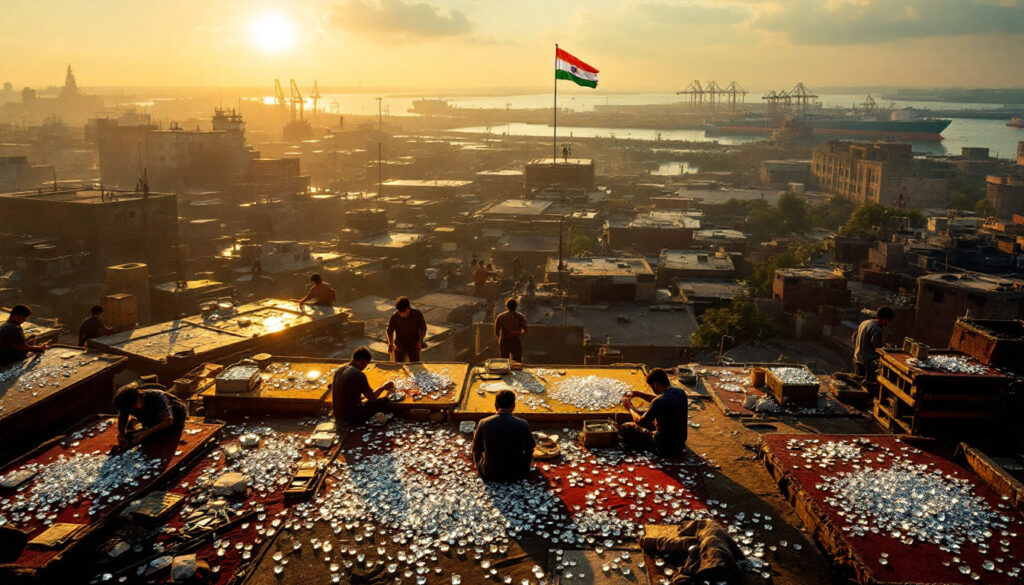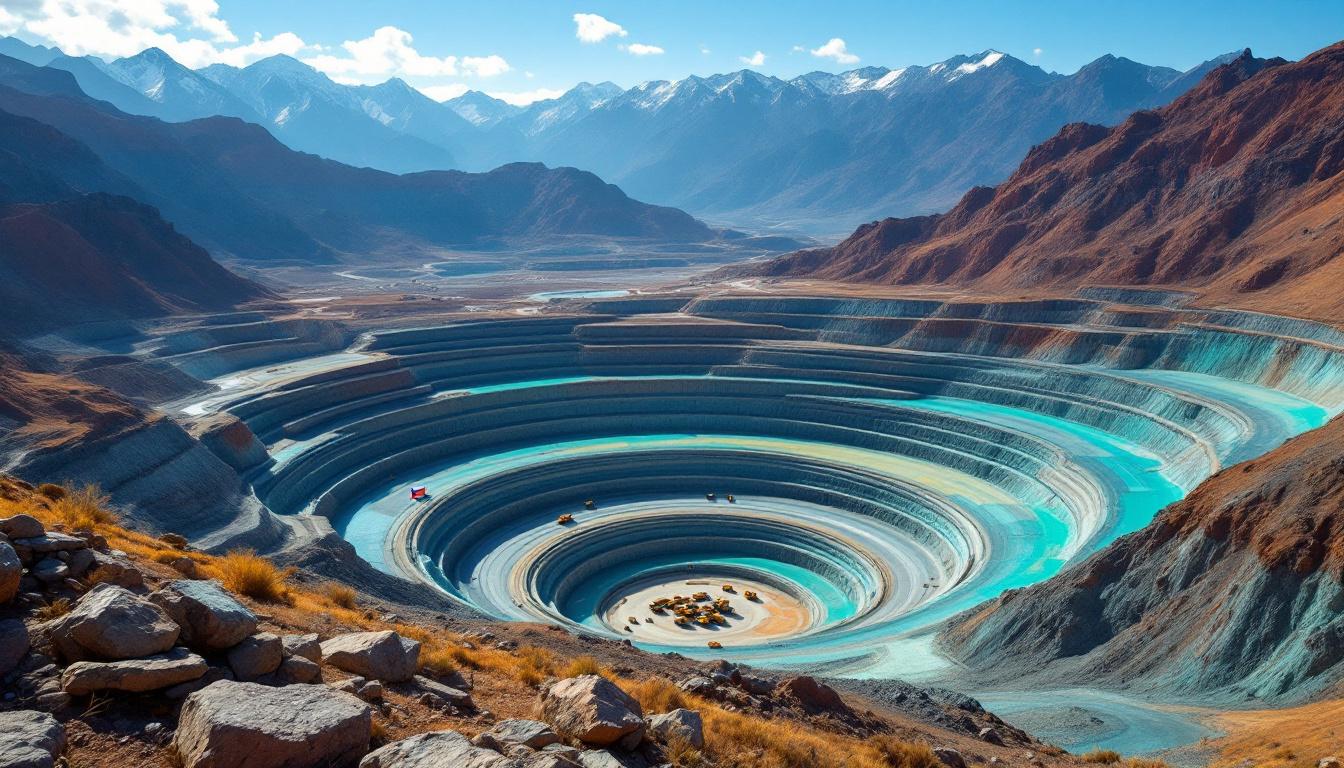Indian Polished Diamond Exports Decline to Two-Decade Low: A Comprehensive Analysis of Causes and Consequences
India's polished diamond exports plummeted to $13.3 billion in FY24/25, marking a 16.8% year-on-year decline—the lowest level in nearly two decades. This downturn reflects broader challenges in the global gem and jewellery trade, with total sector exports falling 11.7% to $28.5 billion, a four-year low. The crisis stems from reduced demand in key markets like the U.S. and China, supply chain disruptions from geopolitical trade challenges, and operational uncertainties triggered by proposed U.S. tariffs. Below, we analyse the structural, economic, and policy dimensions of this Indian polished diamond exports decline and evaluate pathways for recovery.
Understanding the Diamond Export Crisis in India
Current State of India's Diamond Export Industry
India's diamond processing sector, which handles approximately 90% of the world's rough diamonds by volume, faced unprecedented challenges in FY24/25. Exports of cut and polished diamonds fell to $13.3 billion, the lowest since 2004/05, while overall gem and jewellery exports dropped to $28.5 billion. Rough diamond imports declined by 24.3% to $10.8 billion (₹925.95 billion), signalling reduced production capacity. The sector's contribution to India's total merchandise exports fell from 8.2% in FY23/24 to 6.9% in FY24/25, underscoring its diminished role in trade revenue.
Key Drivers:
-
U.S. and Chinese Demand Collapse: The U.S., which accounts for 45% of India's polished diamond exports, reduced purchases by 22% amid inflationary pressures and shifting consumer preferences toward lab-grown alternatives. China, representing 12% of exports, saw demand drop 30% due to economic stagnation and reduced luxury spending.
-
Inventory Overhang: Unsold inventory in Surat and Mumbai reached $7.4 billion by March 2025, forcing manufacturers to curtail processing.
Key Factors Driving the Decline
Geopolitical and Trade Policy Shifts:
The U.S. government's proposed 27% tariff on Indian goods, initially set for April 2025, created panic among buyers and exporters. Though suspended for 90 days, the threat disrupted order timelines, with March 2025 exports rising marginally by 1% to $2.56 billion as buyers accelerated purchases. As GJEPC Vice-Chairman Shaunak Parikh noted, "Exporters rushed shipments to avoid tariff impacts, but this temporary spike masks systemic vulnerabilities".
Competitive Pressures:
Lab-grown diamonds (LGDs) captured 18% of the U.S. market in 2024, up from 5% in 2020, eroding margins for natural diamonds. Indian LGD exports grew 35% to $2.1 billion in FY24/25, but this failed to offset declines in natural diamond revenue.
Financial Strain:
-
Credit Crunch: The Reserve Bank of India reported a 19% drop in credit lines to diamond processors, with non-performing assets (NPAs) in the sector rising to 8.4%.
-
Currency Fluctuations: The rupee's 6% depreciation against the dollar in 2024 increased borrowing costs for rough diamond imports.
How Global Market Dynamics Are Reshaping India's Diamond Trade
US Tariff Impact on Export Strategy
The proposed U.S. tariffs, though temporarily paused, forced Indian exporters to reassess long-term reliance on Western markets. In March 2025, U.S.-bound shipments surged 14% month-on-month as importers stockpiled inventory, but orders for Q2 2025 fell 40% year-on-year. Parikh emphasized, "The suspension hasn't restored confidence—buyers are delaying commitments until tariff clarity emerges".
Structural Dependencies:
-
Just-in-Time Challenges: Over 60% of Indian exporters operate on consignment models, leaving them exposed to order cancellations.
-
Compliance Costs: The U.S. Customs and Border Protection's enhanced scrutiny of Kimberley Process certificates increased clearance times by 72 hours, raising storage fees.
Global Market Responses and Competitor Gains
Shift to Alternative Hubs:
Belgium and Israel capitalized on India's turmoil, increasing their polished diamond exports by 8% and 12%, respectively, in Q1 2025. Antwerp's traders leveraged shorter lead times (14 days vs. India's 21 days) to attract U.S. clients.
Consumer Sentiment:
A De Beers survey found 34% of U.S. consumers postponed diamond purchases in 2024 due to economic uncertainty, while 19% switched to secondhand jewellery.
Strategic Adaptation and Domestic Initiatives
Industry Restructuring Efforts
Production Adjustments:
-
Surat's processing units reduced shifts from three to one daily, cutting 150,000 jobs.
-
MSMEs contributing 40% of exports faced liquidity crises, with 12% shutting operations.
Market Diversification:
- UAE and ASEAN Focus: Exports to the UAE rose 9% in FY24/25, driven by Dubai's status as a re-export hub. India's free trade agreement with ASEAN, effective January 2025, aims to boost shipments to Vietnam and Thailand by 15%.
Domestic Mining and Self-Reliance
NMDC's Panna Mine Expansion:
The state-run National Mineral Development Corporation (NMDC) plans to extract 6,500 carats (valued at $3.4 million) from Madhya Pradesh's Panna mine in FY25/26, up from 4,200 carats in 2024/25. This aligns with India's goal to triple domestic rough diamond production by 2030, reducing dependence on African imports.
Technological Investments:
-
Blockchain Tracking: The Gem & Jewellery Export Promotion Council (GJEPC) launched a blockchain platform in March 2025 to certify diamond origins, targeting ethical consumers.
-
Automated Cutting: Mumbai-based firms adopted AI-powered laser cutters, reducing raw material waste by 11%.
Conclusion: Pathways to Recovery
India's diamond industry faces a pivotal juncture. While FY24/25's decline underscores vulnerabilities in globalized supply chains, strategic pivots toward domestic mining digital transformation, ethical certification, and market dynamics insights offer recovery avenues. The sector's ability to navigate U.S.-China trade tensions, adapt to lab-grown diamond demand, and leverage government support will determine its trajectory. As Parikh concluded, "This crisis is a call to innovate, not retreat".
FAQ: Indian Diamond Export Industry
How significant is the diamond industry to India's economy?
The sector contributes 7% to India's total exports and employs over 1 million workers directly, with ancillary industries supporting 5 million jobs.
What are the main export destinations for Indian polished diamonds?
The U.S. (45%), Hong Kong (22%), UAE (15%), and EU nations (12%) constitute 94% of exports.
What is the outlook for recovery?
GJEPC projects a 5–7% export increase in FY25/26 if tariff uncertainties resolve and domestic mining expands.
How does India's processing compare to competitors?
India holds a 60% cost advantage over China in labor but lags in automation, with only 25% of units using AI-driven tools.
This report synthesizes macroeconomic data, trade policy shifts, and industry adaptations to provide a holistic view of India's diamond export crisis. Strategic investments in technology and diversification, coupled with global commodities insights and green transformation strategies, will be critical to reversing the Indian polished diamond exports decline according to industry experts.
Looking to Stay Ahead of Major Mineral Discoveries?
Discover how significant mineral finds can lead to exceptional investment returns by exploring Discovery Alert's dedicated discoveries page, where our proprietary Discovery IQ model transforms complex data into actionable investment opportunities across the ASX.




